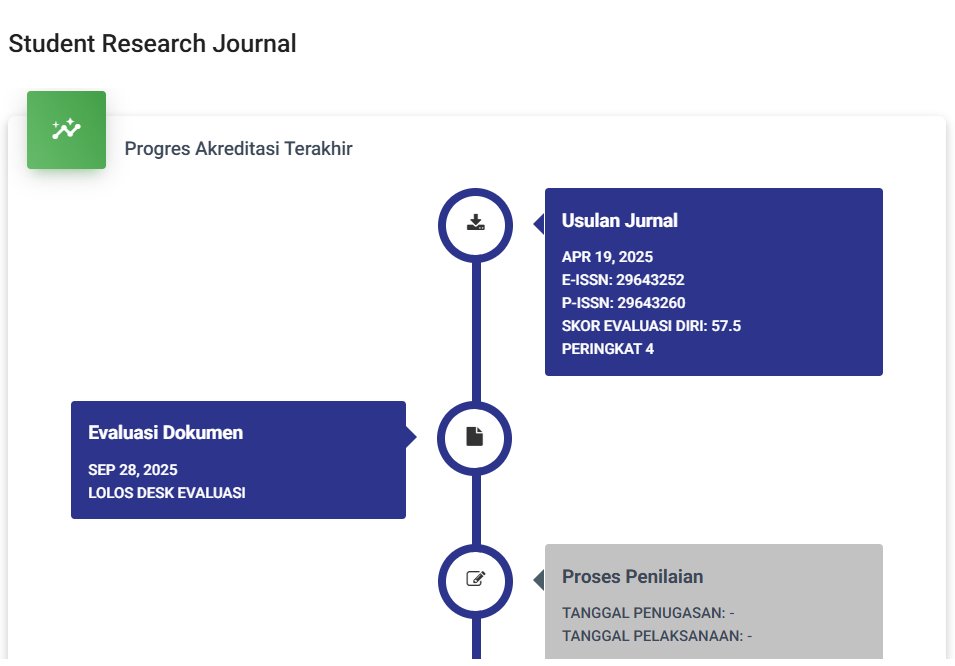Konsistensi Desain sebagai Identitas Lembaga Amil Zakat Dompet Amanah Umat
DOI:
https://doi.org/10.55606/srjyappi.v1i6.802Keywords:
design, consistency, identity, institution, visualAbstract
Design is the process of planning, conceptualizing, and creating an object or system with a specific purpose. It can encompass various fields, including graphic design, product design, interior design, and many more. Design involves decision-making related to structure, function, aesthetics, and user experience to achieve specific goals. Design plays a crucial role in shaping the visual identity of an entity, whether it be a company, organization, or institution. Visual identity includes elements such as logos, colors, typography, and other design elements that become distinctive and easily recognizable. Consistency in design, using these elements, forms a strong visual identity. Therefore, this article explores how design consistency in LAZDAU has successfully created instant identification, captivated audiences, and effectively conveyed the messages intended by the institution. The results of this article can provide a deeper understanding of the essential role of design in shaping the visual identity of a zakat amil institution.
References
Nugrahani, F., & Hum, M. (2014). Metode penelitian kualitatif. Solo: Cakra Books. 1(1), 3-4.
Supriyono, R. (2010). Desain Komunikasi Visual Teori dan Aplikasi. Yogyakarta: ANDI.
Kusrianto, A. (2009). Pengantar Desain Komunikasi Visual. Yogyakarta: ANDI.
Sanyoto, S.E., (2005). Nirmana: Dasar-dasar Seni dan Desain. Yogyakarta: Jalasutra.
Danton, Sihombing. (2001). Tipografi dalam desain grafis. Gramedia Pustaka Utama.
Landa, R. (2010). Graphic Design Solutions, 4th Edition. Beverly: Clark Baxter.
Syarief, R. M. (2005). Live Excelllence, Menuju Hidup Lebih Baik. Jakarta: Prestasi.
Patil, D. (2012). Coloring consumer's psychology using different shades the role of perception of colors by consumers in consumer decision making process: A micro study of select departmental stores in Mubai City, India. Journal of Business and Management Research. 7(1):60-73.
Tham DSY, Sowden PT, Grandison A, et al. (2020). A systematic investigation of conceptual color associations. Journal of Experimental Psychology: General. 149(7):1311-1332.
Mohamed Razali, N. (2019). Warna Hijau Menurut Perspektif Al-Quran: Satu Analisis Awal. Journal of Ma alim Al-Qur an Wa Al-Sunnah.
Sutrisno, S., Tannady, H., Ekowati, D., MBP, R. L., & Mardani, P. B. (2022). Analisis Peran Kualitas Produk Dan Visual Identity Terhadap Purchase Intention Produk Teh Dalam Kemasan. Management Studies and Entrepreneurship Journal (MSEJ), 3(6), 4129-4138.
Mayangsari, K., Said, A. A., & Nurabdiansyah, N. (2017). Perancangan Visual Branding Butik Luthfiah Makassar. Jurnal Imajinasi, 1(2), 72-79.
Enterprise, J. (2018). Desain grafis komplet. Elex Media Komputindo.
Dewojati, R. K. W. (2009). Desain grafis sebagai media ungkap periklanan. Imaji, 7(2).
Nugroho, S. (2015). Manajemen warna dan desain. Penerbit Andi.
Irawan, B., & Tamara, P. (2013). Dasar-dasar desain. Griya Kreasi.
Wijaya, P. Y. (1999). Tipografi dalam desain komunikasi visual. Nirmana, 1(1).
Cenadi, C. S. (1999). Elemen-elemen dalam desain komunikasi visual. Nirmana, 1(1).
Devecchi, A., & Guerrini, L. (2017). Empathy and Design. A new perspective. The Design Journal, 20(sup1), S4357-S4364.
Gasparini, A. (2015, February). Perspective and use of empathy in design thinking. In ACHI, the eight international conference on advances in computer-human interactions (pp. 49-54).
Downloads
Published
How to Cite
Issue
Section
License
Copyright (c) 2023 Devinnisa Jehan Siddiqa Fabtian, Aris Sutejo

This work is licensed under a Creative Commons Attribution-ShareAlike 4.0 International License.








